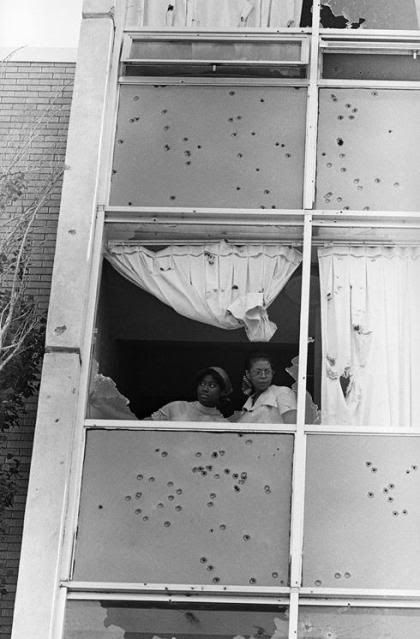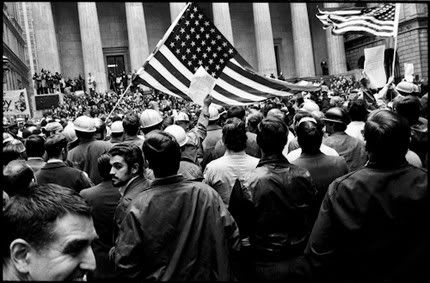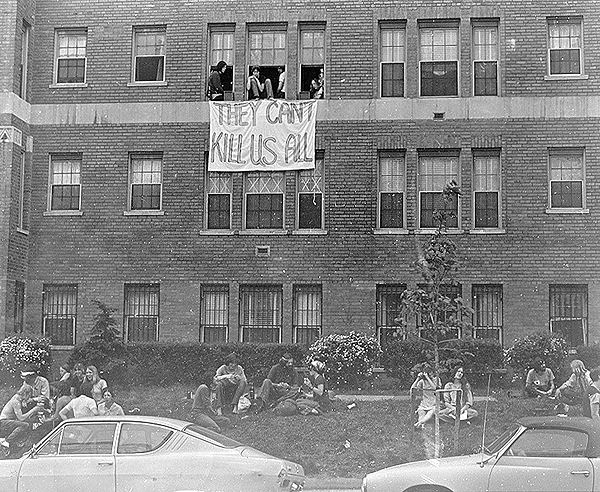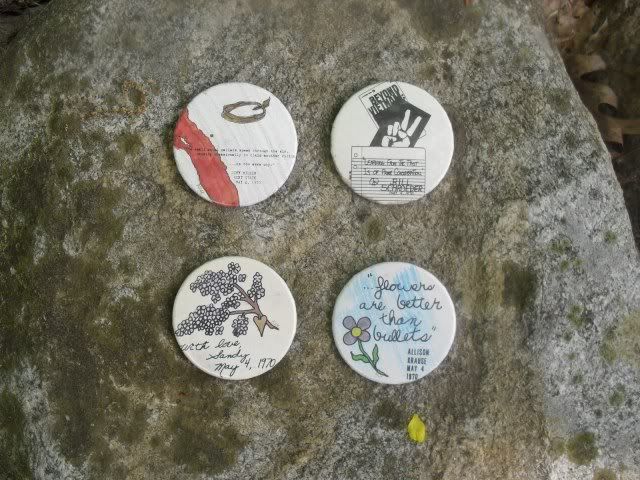May the Third, 1970 was a Sunday.
The main thing about it was that we still really didn’t quite have a handle on what was happening. Not did we know what was about to happen. Those who had spent years fighting campus battles–or who felt ourselves part of the broader multifaceted forces of social justice generally known as The Movement–were pretty much as full of excitement and uncertainty as the high school sophomore who had suddenly decided that she would cut school on Monday and head on over to see what was happening at the local college.
With the benefit of hindsight, of course, we now know that forces were gathering which would only one day in the future recast everything that had happened so far and intensify it by an order of magnitude.
What were we doing on May 3?
Though Students for a Democratic Society was gone, and with it any chance of real national leadership and coordination, it would be wrong to overestimate our isolation. Local successor groups and semi-formal regional networks were solidly in place in many parts of the country.
The first thing we did was share information. That was harder in the pre-Internet days, but every nugget plucked from a high school classmate or sib who had gone to a different school halfway across the country, every report from the radio, the teevee or the newspaper, circulated immediately.
And we networked. 20 campuses in the mid-Atlantic area had representatives at an emergency meeting at the University of Pennsylvania to coordinate strike activity.
And we organized. In the Boston area alone, organizers at M. I. T., Harvard. Tufts and Boston University were building for mass meetings on Monday to vote on strike proposals, while students at Brandeis met in their dormitories on the 3rd to decide what action to take. More than a dozen campus newspapers around the country endorsed the demands coming out from New Haven rally two days before.
[Interestingly the article from the Harvard Crimson dated May 4, 1970 where I found some of this info reported 1. that a “National Strike Committee” had come out of the May Day rally in New Haven and 2. that there was a fourth demand, Impeach Nixon. A good call, history would prove, but I don’t remember it myself, and for sure it was not on the semi-canonical 11×17 black on yellow strike poster.]





